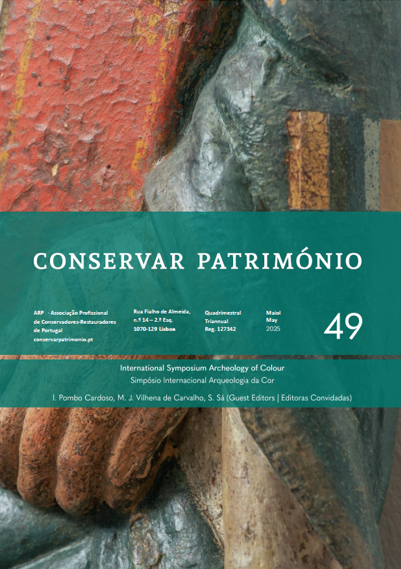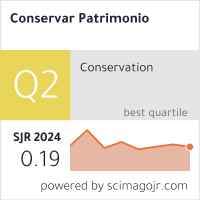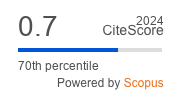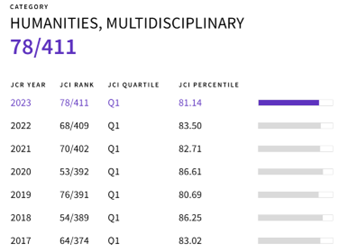Oriental patterns in Andalusi textile ornamentation – 13th-15th centuries
DOI:
https://doi.org/10.14568/cp2018026Keywords:
Andalusi textiles, Re-evaluation textile decoration, Panni tartarici, Almohad fabrics, Nasrid fabricsAbstract
Andalusi textiles developed a decorative repertoire of oriental origin. In the second half of twelfth century there was a change in textile decoration. This change has been associated with the religiosity of the Almohads, the new dynasty. Also, it has been considered that the textile production of the Nasrid period is unique and has been related to the architectural decoration, but the Andalusi textile production of the last centuries of the Middle Ages is related to the decorative changes that are produced from the dissemination of fabrics from central Asia, which influence the production of workshops in the Mediterranean Basin.
Received: 2018-6-17
Revised: 2018-11-7
Accepted: 2018-12-5
Online: 2019-2-4
Publication: 2019-4-30
Downloads
References
[1] Rodríguez Peinado, L., 'La producción textil en al-Andalus: origen y desarrollo', Anales de Historia del Arte 22 (2012) 265-279, https://doi.org/10.5209/rev_anha.2013.v23.41572.
[2] Rodríguez Peinado, L., 'La seda en la Antigüedad Tardía y al-Andalus', in Las rutas de la seda en la historia de España y Portugal, ed. R. Franch Benavent & G. Navarro Espinach, Publicacions de la Universitat de València, Valencia (2017) 15-38.
[3] Molina López, E.; Álvarez de Morales, C., `Repertorio de noticias geográficas sobre Almería islámica', in Homenaje a la profesora Elena Pezzi, ed. A. Escobedo Rodríguez, Universidad de Granada, Granada (1993) 77-86.
[4] Serjeant, R., Islamic Textiles. Material for a History up the Mongol Conquest, Intl. Book Center, Beirut (1972).
[5] Partearroyo Lacaba C., 'Tejidos almorávides y almohades', in Al-Andalus, las Artes Islámicas en España, ed. J. Dodds, El Viso, Madrid (1992) 105-114.
[6] Mackie, L. W., Symbols of Power. Luxury textiles from Islamic lands, 7th-21th Century, New Haven - Londres, The Cleveland Museum of Art (2015).
[7] Rosser-Owen, M., Arte Islámico de España, Fundación Tres Culturas - Turner, Sevilla (2010).
[8] Partearroyo Lacaba, C., 'Tejidos andalusíes', Artigrama: Revista del Departamento de Historia del Arte de la Universidad de Zaragoza 22 (2007) 371-419.
[9] Herrero Carretero, C., Museo de Telas Medievales. Monasterio de Santa María la Real de Huelgas. Patrimonio Nacional, Madrid (1988).
[10] Jacoby, D., 'Silk economics and cross-cultural artistic interaction: Byzantium, the Muslim World, and the Christian West', Dumbarton Oaks Papers 58 (2004) 198-240, https://doi.org/10.2307/3591386.
[11] Partearroyo Lacaba C., 'Los tejidos de al-Andalus entre los siglos IX al XV (y su prolongación en el siglo XVI)', in España y Portugal en las Rutas de la Seda. Diez Siglos de Producción y Comercio Entre Oriente y Occidente, Comisión Española de la Ruta de la Seda, Universitat de Barcelona, Barcelona (1996) 58-73.
[12] Partearroyo Lacaba C., 'Estudio histórico-artístico de los tejidos de al-Andalus y afines', Bienes Culturales: Revista del Instituto del Patrimonio Histórico Español 5 (2005) 371-420.
[13] Goitein, S., A Mediterranean society. The Jewish communities of the Arab World as Portrayed in the Documents of the Cairo Geniza, University of California Press, Berkeley - Los Angeles (1967).
[14] Cameron, A., El Mundo Mediterráneo en la Antigüedad Tardía (395-600), Crítica, Barcelona (1998).
[15] Rodríguez Peinado, L., 'Los textiles como objetos de lujo y de intercambio', in Las Artes en Al-Andalus y Egipto. Contextos e Intercambios, ed. S. Calvo Capilla, La Ergástula, Madrid (2017) 187-206.
[16] Herrero Carretero, C., 'Marques d'importation au XIVe siècle sur les tissus orientaux de Las Huelgas', Bulletin du CIETA 81 (2004) 40-47.
[17] Böse, K., 'Beyond foreign: textiles from the Castilian royal tombs in Santa María de Las Huelgas in Burgos', in Oriental Silks in Medieval Europe, eds. J. von Firks & R. Schorta, Abegg-Stiftung, Riggisberg (2016) 213-230.
[18] Wardwell, A., Panni Tartarici: Eastern Islamic Silks Woven with Gold and Silver (13Th and 14Th Centuries), Bruschettini Foundation for Islamic and Asian Art, New York (1989).
[19] Wardwell, A., 'Flight of the Phoenix: crosscurrents in late thirteenth- to fourteenth-century silk patterns and motifs', Bulletin of the Cleveland Museum of Art 74 (1987) 2-35.
[20] Jacoby, D., 'Oriental silks at the time of the Mongols: patterns of trade and distribution in the West', in Oriental Silks in Medieval Europe, eds. J. von Firks & R. Schorta, Abegg-Stiftung, Riggisberg (2016) 92-123.
[21] Feliciano, M. J., 'Medieval textiles in Iberia: studies for a new approach', in Envisioning Islamic Art and Architecture. Essays in Honor of Renata Holod, eds. D. J. Roxburgh, Brill, Leiden - Boston (2014) 46-65, https://doi.org/10.1163/9789004280281_004.
[22] Yarza, J., Vestiduras Ricas. el Mona terio de las Huelgas y Su Época, 1170-1340, Patrimonio Nacional, Madrid (2005).
[23] Saladrigas Cheng, S., 'Los tejidos en Al-Andalus: siglos IX - XVI. Aproximación técnica', in España y Portugal en las Rutas de la Seda. Diez Siglos de Producción y Comercio Entre Oriente y Occidente, Comisión Española de la Ruta de la Seda, Universitat de Barcelona, Barcelona (1996) 74-98.
[24] Dolezalek, I., 'Comparing forms, contextualising functions: Arabic inscriptions on textiles of the Norman king William II and Fatimid tiraz', in Oriental Silks in Medieval Europe, ed. J. von Firks & R. Schorta, Abegg-Stiftung, Riggisberg (2016) 80-91.
[25] Hernández Sánchez, F., 'Dos nuevas piezas metálicas mamelucas de la colección del Instituto Valencia de don Juan', in Las Artes en Al-Andalus y Egipto. Contextos e Intercambios, ed. S. Calvo Capilla, La Ergástula, Madrid (2017) 131-144.
[26] López Redondo, A., Marinetto Sánchez, P., A la Luz de la Seda. Catálogo de la Colección de Tejidos Nazaríes del Museo Lázaro Galdiano y el Museo de la Alhambra. Orígenes y pervivencias, TF Editores, Madrid (2012).
[27] Ritter, M., 'Cloth of gold from West Asia in a late medieval European context: the Abu Sa'id textile in Vienna - Princely funeral, and cultural transfer', in Oriental Silks in Medieval Europe, eds. J. von Firks & R. Schorta, Abegg-Stiftung, Riggisberg (2016) 231-251.
[28] Otavsky, K., Salim, M. A. M., Mittelalterliche Textilien I. Ägypten, Persien und Mesopotamien, Spanien und Nordafrika, Abegg-Stiftung, Riggisberg (1995).
[29] Ruiz Souza, J. C., 'Egipto, Granada y Castilla: estrategias y convergencias en la arquitectura del poder', in Las Artes en Al-Andalus y Egipto. Contextos e Intercambios, ed. S. Calvo Capilla, La Ergástula, Madrid (2017) 207-232.
[30] Moreno García, M., Platero Otsoa, A., 'Gloria al sultán en la capa de los condestables de la catedral de Burgos', Akobe: Conservación y Restauración de Bienes Culturales 8 (2007) 36-43.
[31] Von Fircks, J., 'Islamic striped brocades in Europe: "Heinrichsgewänder" in Regensburg from a transcultural perspective', in Oriental Silks in Medieval Europe, eds. J. von Firks & R. Schorta, Abegg-Stiftung, Riggisberg (2016) 266-287.
[32] Borkopp-Restle, B., 'Striped golden brocades with Arabic inscriptions in the textile treasure of St. Mary's church in Danzig/Gdansk', in Oriental Silks in Medieval Europe, eds. J. von Firks & R. Schorta, Abegg-Stiftung, Riggisberg (2016) 288-299.
[33] De los Santos Rodríguez, R. M.; Suárez Smith, C., 'Informe técnico sobre los trabajos de conservación y restauración de la capa del infante don Felipe (siglo XIII), Boletín del Museo Arqueológico Nacional 15 (1997) 231-239.
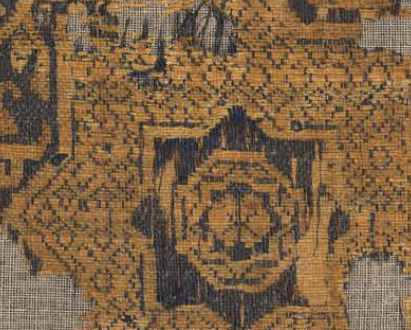
Downloads
Published
How to Cite
Issue
Section
License
This work is distributed under a Creative Commons Attribution License (CC BY-NC-ND 4.0) which permits use, distribution, and reproduction in any medium following no commercial or derivatives, provided the original author and source are credited.
Copyright remains with the authors.





